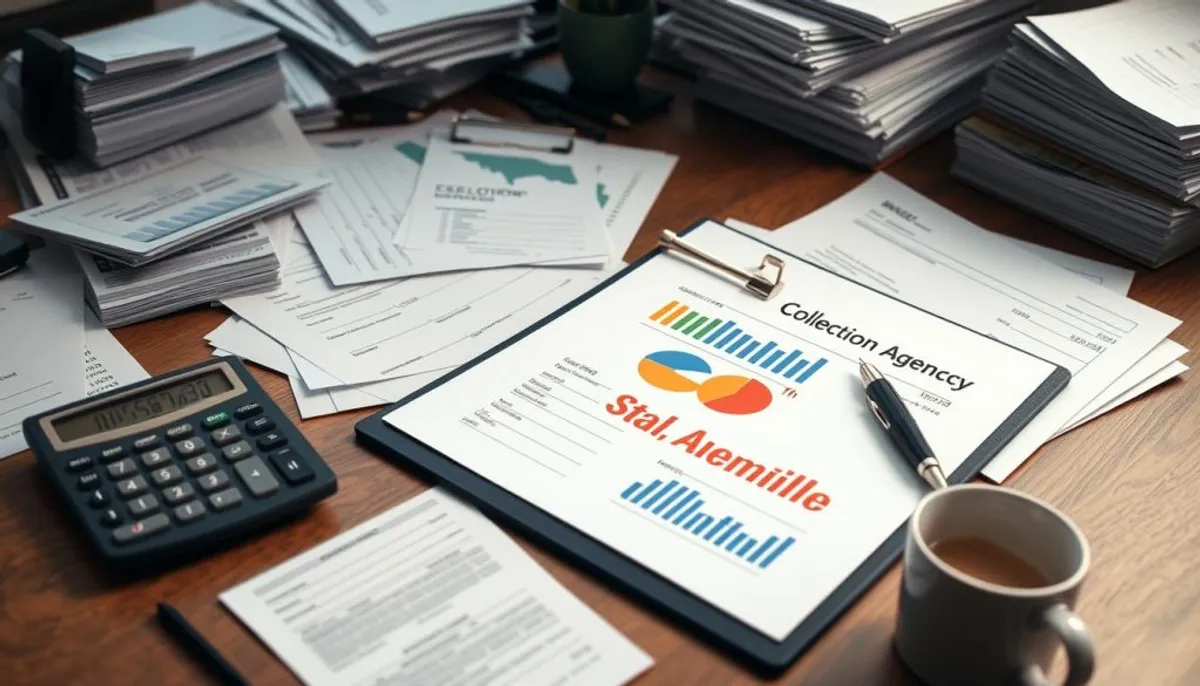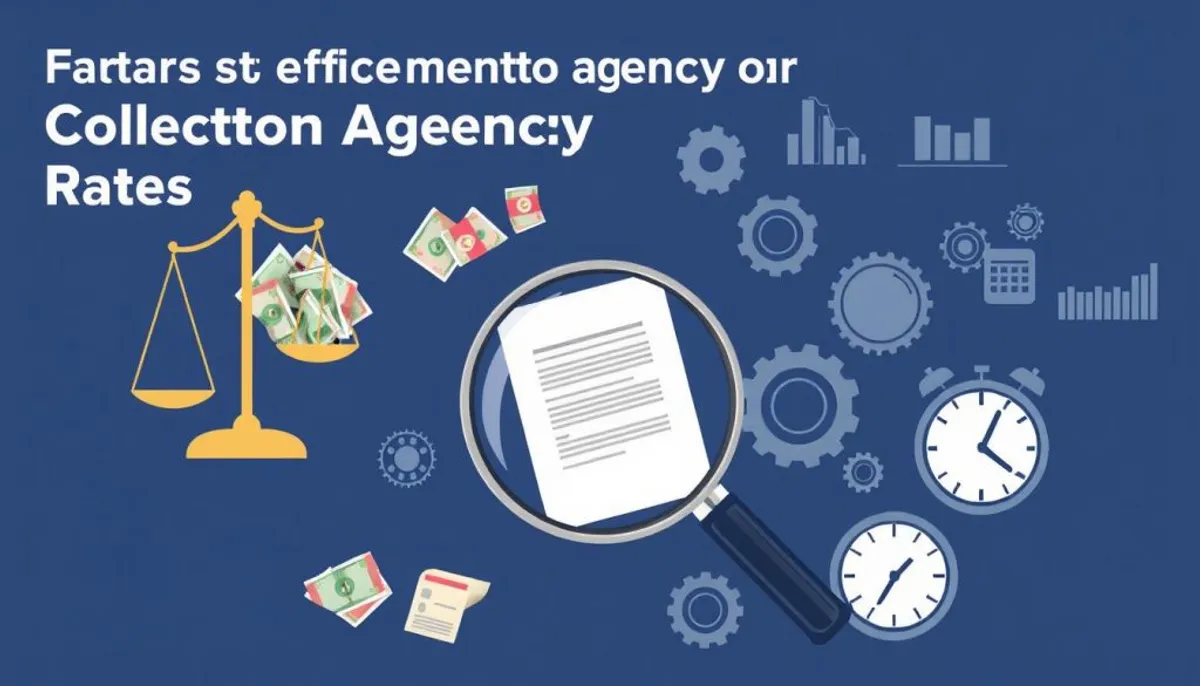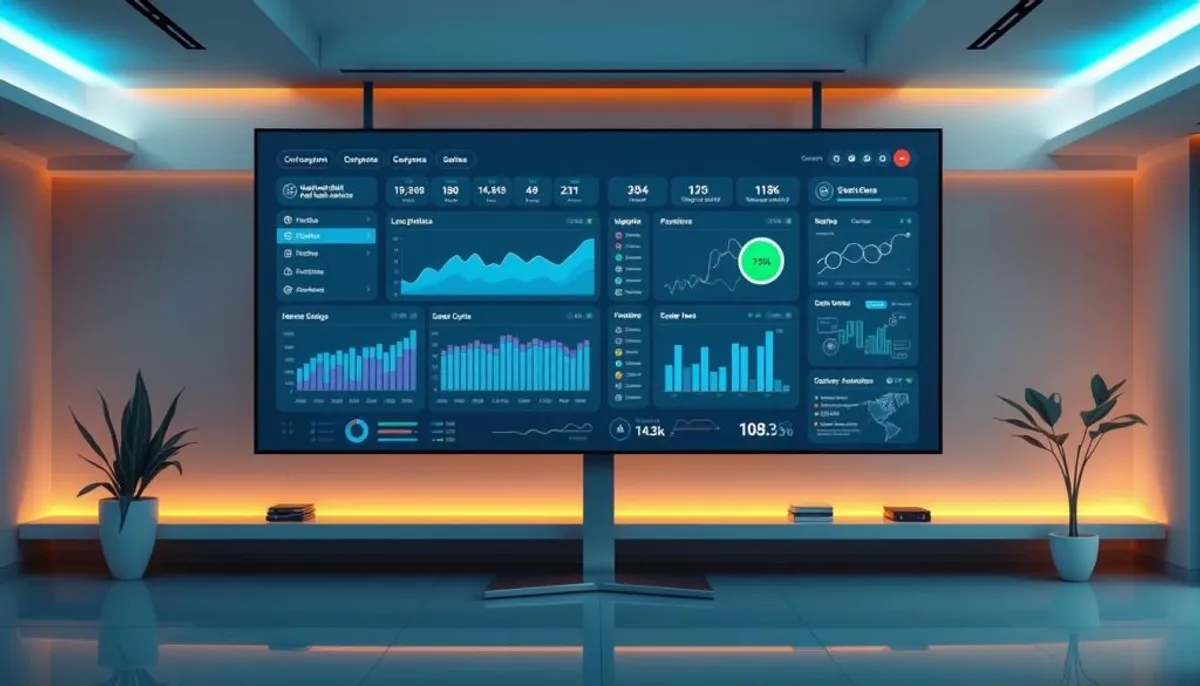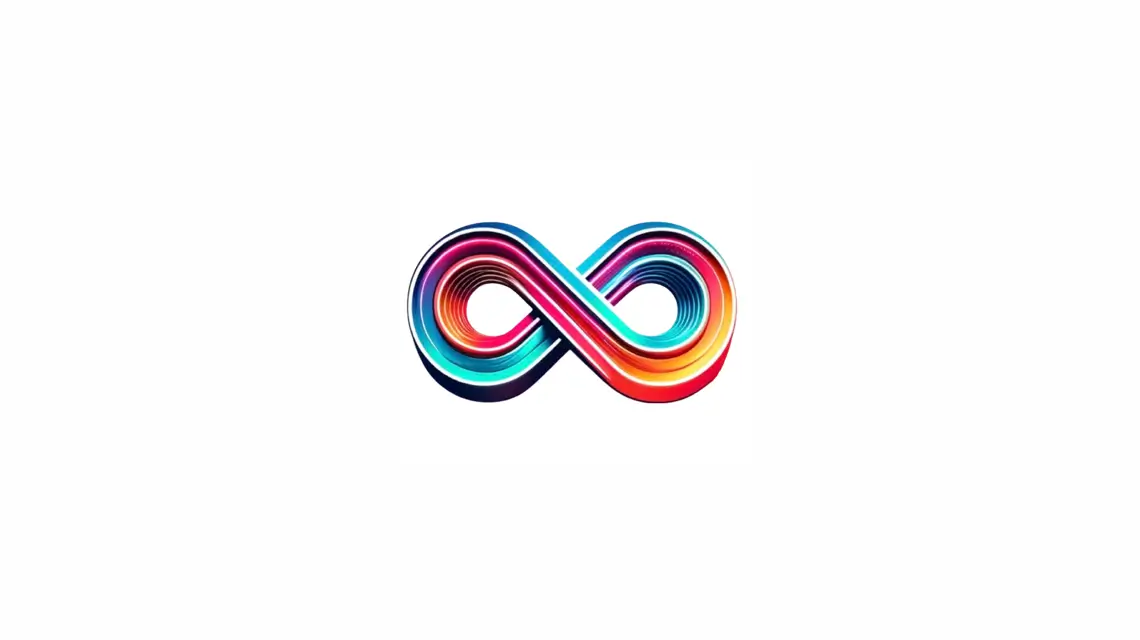Exploring the realm of collection agency fees can be complex. Whether you’re a business owner or an individual facing late payment charges, grasping the costs of debt collection is vital. This guide aims to elucidate the diverse pricing models and elements that shape collection agency fees.

Collection agencies employ various fee structures to cater to different requirements. From contingency-based models to flat fee programs, the expenses can fluctuate significantly. Typically, contingency fees span from 20% to 50% of the recovered sum. Agencies like IC System offer flat fee options starting at $9 per account.
The age and magnitude of the debt are pivotal in determining collection expenses. For example, older debts or larger sums might incur higher fees. Industry-specific elements also influence pricing. It’s crucial to consider these factors when assessing collection services.
Key Takeaways
- Contingency fees typically range from 20% to 50% of recovered funds
- Flat fee collection services can cost between $9 to $14.50 per account
- Debt age and size significantly influence collection agency fees
- Industry-specific factors can affect pricing structures
- Additional services like credit reporting may incur extra charges
Understanding Collection Agency Fee Structures
Collection agencies employ diverse pricing models to reclaim debts. These models influence the costs associated with delinquent account penalties and overdue balance surcharges. We will examine the primary fee structures prevalent in the industry.
Contingency-Based Collections
Contingency fees represent the most prevalent pricing model. Agencies only receive compensation upon successful debt collection. The Kaplan Group exemplifies this with fees ranging from 10-50% of the claim amount. For claims under $1,000, they charge 50%, decreasing to 10% for claims exceeding $500,000. Typically, agencies demand 20-50% for debts with a longer history and up to 20% for more recent ones.
Flat Fee Collections
Flat fee models are another approach, where agencies charge a fixed amount per account, irrespective of the debt’s size or collection success. These fees can begin at just $15 per account. This method ensures cost predictability but may not always reflect the actual recovery outcomes.
Hybrid Payment Models
Hybrid models combine elements of contingency and flat fee structures. Agencies might impose a small upfront fee alongside a lower contingency rate. This hybrid approach balances the risks between the agency and the client. Some agencies customize these models for specific industries or debt categories.
| Fee Structure | Typical Range | Best For |
|---|---|---|
| Contingency | 10-50% | Varied debt amounts |
| Flat Fee | $15-$50 per account | Large volume of small debts |
| Hybrid | Varies | Complex or specialized collections |
In selecting a fee structure, it is crucial to consider your debt profile and risk tolerance. High success rates often outweigh lower fees. Opting for the appropriate model can significantly enhance your financial outcomes when managing delinquent accounts.
How Much Do Collection Agencies Charge: Complete Breakdown
Collection agencies employ various pricing models to pursue unpaid bills. The prevalent models include contingency fees and flat fees. Contingency fees span from 20% to 50% of the collected sum, whereas flat fees average $15 per account.
The fees for recovering unpaid bills are influenced by several factors. These include the debt’s age, size, and the industry it belongs to. Debts under $1,000 or less than 90 days old typically incur fees around 20%. On the other hand, larger debts exceeding $500,000 or older than 2 years may face fees up to 50%.
The success rates in recovering outstanding debts vary significantly. This variation is largely due to the agency’s experience and the complexity of the debt. Agencies with higher success rates often charge more but may offer better value. Here’s a detailed look at the typical fee structure:
| Debt Age | Debt Size | Average Fee |
|---|---|---|
| Less than 90 days | Under $1,000 | 20-25% |
| 90-180 days | $1,000-$5,000 | 25-30% |
| 180 days – 1 year | $5,000-$50,000 | 30-40% |
| 1-2 years | $50,000-$500,000 | 40-45% |
| Over 2 years | Over $500,000 | 45-50% |
It’s important to note that additional services, such as credit reporting or skip tracing, may come with extra costs. When selecting a collection agency, it’s crucial to consider both their fees and success rates. This approach will help in achieving the best possible debt recovery outcomes.
Factors Affecting Collection Agency Rates
Collection agency rates are influenced by various factors. Understanding these can aid businesses in making informed decisions when selecting a debt recovery service.
Debt Age Impact on Fees
The age of a debt significantly affects defaulted loan collection percentages. For debts under 120 days, agencies typically charge around 20% of the recovered amount. This rate increases to about 25% for debts aged 120 to 180 days. Debts between 1 and 2 years old may incur fees up to 40%, with some agencies charging 50% for very old debts.
Debt Amount Considerations
The size of the debt also impacts past due account service fees. Generally, larger debts have lower percentage fees but higher overall costs. Debt collectors often charge between $10 and $50 for every $100 collected, depending on the total amount owed.
Industry-Specific Rate Variations
Different industries face unique challenges in debt collection, leading to rate variations. Economic conditions, such as recessions, can impact collection efforts across sectors. For instance, during the 2020 COVID-19 pandemic, over 750,000 borrowers received additional forbearance from Debt Collection Agencies.

To enhance collection rates, many agencies are adopting innovative strategies. These include leveraging automation and AI, implementing self-service options, and using proactive communication methods. Such approaches have shown to increase payment rates by up to 65% and reduce inbound call volumes by 30%.
Understanding Success Rates and Recovery Percentages
Collection agency success rates and debt recovery percentages exhibit significant variability within the industry. Agencies rarely promise a 100% collection success rate. Yet, some boast impressive figures. For instance, agencies achieve success rates up to 85% for large viable claims. Claims under $10,000, on the other hand, see slightly lower rates at 76%.
Debt age is a pivotal factor in recovery success. Research indicates that success rates plummet by over 1% each week as debts age. This underscores the critical need for prompt action in debt collection endeavors.
It’s noteworthy that creditors frequently grant agencies the authority to settle for less than the full amount owed. This approach can enhance collection agency success rates. It still allows for the recovery of a substantial portion of the debt.
| Debt Type | Success Rate | Average Recovery |
|---|---|---|
| Large Claims | 85% | 70-80% |
| Small Claims (<$10,000) | 76% | 60-70% |
| Aged Debts (>90 days) | 50-60% | 40-50% |
Grasping these debt recovery percentages is crucial for businesses aiming to engage collection agencies. It’s vital to consider factors like debt age, amount, and industry when assessing potential collection partners. This evaluation should be based on their reported success rates.
Additional Services and Their Costs
Collection agencies provide a range of services beyond the basic debt recovery. These extra offerings can significantly affect the total cost of debt collection. We will examine some common services and their associated expenses.
Skip Tracing Fees
Skip tracing is essential when locating debtors proves challenging. This service entails thorough research to uncover current contact details. Agencies generally charge between $10 to $25 per account for skip tracing. Though it increases the overall expense, it greatly enhances the likelihood of recovering debts from elusive debtors.
Credit Reporting Services
Credit reporting is a common service offered by many agencies. The fees for credit reporting can be included in the overall collection cost or billed separately. These fees typically fall between $5 to $15 per account. Reporting unpaid debts to credit bureaus can prompt debtors to settle their accounts more expediently.
Legal Action Expenses
In certain instances, legal action is necessary to recover debts. Legal collection expenses can vary significantly, depending on the case’s complexity. Costs include court filing fees, attorney fees, and service of process charges. These expenses can range from a few hundred to several thousand dollars per case.
| Service | Typical Cost Range | Impact on Recovery |
|---|---|---|
| Skip Tracing | $10 – $25 per account | Improves chances of locating debtors |
| Credit Reporting | $5 – $15 per account | Motivates faster debt settlement |
| Legal Action | $500 – $5,000+ per case | Enables debt recovery through courts |
Though these additional services elevate collection costs, they often result in higher recovery rates. Agencies such as The Kaplan Group report an 85% success rate on large viable claims. This highlights the effectiveness of comprehensive collection strategies.
Introducing ti3: A Modern Alternative to Traditional Collections
In today’s business environment, late payments are a significant hurdle. With 89% of small-to-medium businesses facing growth hurdles due to delayed payments, a modern solution is imperative. Ti3 emerges as a cutting-edge platform, transforming the debt collection landscape.

Automated Payment Recovery
Ti3 employs automated debt collection methods to streamline the recovery process. This system sends timely reminders, alleviating the 14 hours weekly that 65% of businesses dedicate to payment collection. By automating these tasks, ti3 frees up valuable time and resources for businesses.
Client Relationship Preservation
Unlike traditional methods, ti3 emphasizes client relationship management. This is vital, given that 25% of small businesses risk closure due to payment issues. Ti3’s approach ensures timely payments while preserving professional relationships through gentle yet effective reminders.
Cost-Effective Solutions
Ti3 presents a cost-effective recovery solution for businesses. With small businesses spending around £5,000 annually on late payment recovery, ti3’s efficient system offers a more economical alternative. This platform minimizes the need for manual processing, which often results in over 30 days to process payments, compared to just 14 days with automated systems.
| Feature | Traditional Collection | Ti3 Platform |
|---|---|---|
| Payment Processing Time | 30+ days | 14 days |
| Client Relationship Impact | Often Negative | Preserved |
| Cost | High | Low |
| Automation Level | Low | High |
By embracing ti3, businesses can tackle the 49% of invoices that become overdue in the US, enhancing cash flow and promoting growth. This innovative platform represents a paradigm shift in debt collection, offering a harmonious blend of efficiency and relationship preservation.
Comparing Collection Agency Pricing Models
In the realm of collection agency pricing, businesses must navigate through diverse models. A detailed debt recovery cost analysis is crucial for selecting the most fitting option. This choice significantly impacts a company’s financial strategy.
Contingency-based models eliminate upfront costs, yet the agency’s commission on successful collections can be substantial. This commission can vary from 20% to 50% of the recovered amount. On the other hand, flat fee structures are ideal for companies with numerous small debts. Here, a fixed amount is paid per account, irrespective of collection outcomes.
Hybrid models combine elements from both contingency and flat fee structures. While the higher fees might deter some, they often accompany more extensive services or superior success rates. This can result in enhanced overall returns, despite the increased expense.
| Pricing Model | Pros | Cons |
|---|---|---|
| Contingency | No upfront cost | Higher fees on success |
| Flat Fee | Lower per-account cost | Paid regardless of success |
| Hybrid | Balanced approach | Can be complex |
Collection agencies can efficiently send up to five collection demands for $15, a cost significantly lower than in-house efforts, which range from $16 to $30 per demand. This efficiency makes them a compelling choice for businesses grappling with debt recovery challenges.
Timeline of Collection Efforts and Associated Costs
The debt collection timeline encompasses various stages, each with distinct procedures and costs. Grasping this process is crucial for businesses to anticipate the escalating costs of recovering unpaid debts.
Early Stage Collections
When a payment is 30 days overdue, the collection process initiates. Initially, internal efforts are employed to reclaim the debt. Costs remain modest, as businesses leverage their own resources to reach out to debtors via phone, email, or mail.
Mid-Stage Recovery Efforts
Should early attempts at recovery falter, mid-stage efforts commence around 90 days past due. At this juncture, many businesses engage collection agencies. Fees for this phase typically span from 25% to 33% of the recovered sum. Agencies may employ more assertive strategies and specialized tools to track and contact debtors.
Late-Stage Collection Procedures
For debts exceeding 180 days, late-stage procedures are activated. This phase may involve legal action, leading to increased fees, often 40% to 50% of the recovered sum. The elevated costs reflect the challenges in retrieving older debts and the resources needed for potential legal proceedings.
| Collection Stage | Timeframe | Typical Fee Range |
|---|---|---|
| Early Stage | 30-90 days | 10-20% |
| Mid-Stage | 90-180 days | 25-33% |
| Late-Stage | 180+ days | 40-50% |
As the debt collection timeline advances, the prospects for successful recovery diminish, resulting in higher costs. Businesses must factor these escalating fees into their decision-making regarding the most economical debt recovery strategies.
Best Practices for Choosing a Collection Service
Selecting collection agencies necessitates meticulous deliberation. A comprehensive debt recovery service evaluation is imperative to ensure alignment with your business objectives. This section delves into pivotal considerations for selecting a collection service.
Initiate by scrutinizing the agency’s reputation and success metrics. Peruse Better Business Bureau ratings and customer testimonials. Assess their collection methodologies to guarantee congruence with your ethical standards. Evaluate their technological prowess and reporting functionalities for transparency.
When assessing agencies, focus on their sector-specific expertise and specialized offerings. For instance, healthcare collection agencies must provide diplomatic approaches, fixed fee structures, and adhere to HIPAA, FDCPA, and TCPA mandates.
Pricing is a critical element, yet it should not be the sole determinant. Several esteemed agencies proffer competitive pricing structures:
- Summit Account Resolution: 7% to 50% fees, 34.8% average recovery rate
- Prestige Services Inc.: 22% to 33% fees, 10-day free demand services
- Rocket Receivables: $14.95 to $21.95 per account, recovery rate four times industry average
- IC System: $14.95 per account for Recovery Plus program, 25% fee for Premier Collect Plan
Verify the agency’s licensure, bonding, and insurance compliance in your jurisdiction. They must employ secure protocols for handling confidential data and furnish detailed reports on recovery rates and collections.
| Agency | Editor’s Rating | Key Feature |
|---|---|---|
| Summit Account Resolution | 9.6/10 | High recovery rate (up to 80%) |
| Prestige Services Inc. | 9.5/10 | 10-day free demand services |
| Rocket Receivables | 9.3/10 | 4x industry average recovery rate |
| IC System | 9.3/10 | Flexible pricing plans |
By meticulously evaluating these criteria, you will be adequately prepared to select a collection service that fulfills your requirements and optimizes debt recovery.
Conclusion
Grasping the nuances of collection agency fee structures is paramount for enterprises aiming to optimize debt recovery strategies. This summary elucidates that fees generally span from 25% to 50% of the recovered sum. Variations in fees are influenced by the debt’s age, its risk profile, and industry-specific considerations.
The overview of debt recovery costs delineates three primary pricing models: flat fees, contingency fees, and blended fees. Flat fees demand upfront payments for specific services rendered. In contrast, contingency fees are contingent upon successful debt collection, with no charges if collection fails. Blended fees, on the other hand, amalgamate elements of both, catering to diverse collection requirements.
In the selection of a collection agency, it is imperative to consider more than just the fees. Businesses should engage in comparative analyses, scrutinizing agencies’ success rates and the breadth of their services. Contemporary alternatives, such as ti3, offer automated, cost-efficient solutions that maintain client rapport. By comprehending these elements, enterprises can make strategic choices to enhance debt recovery outcomes while curtailing expenses.
RelatedRelated articles



